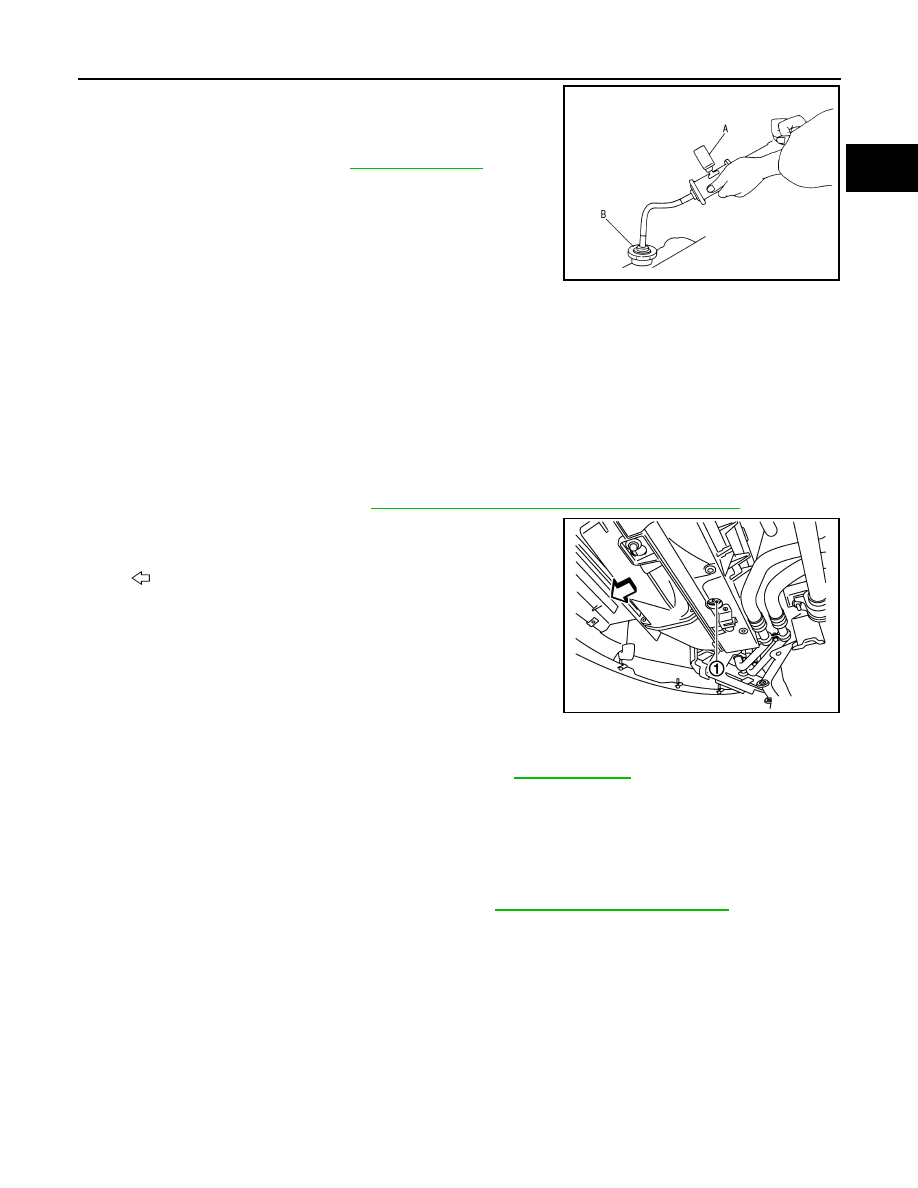содержание .. 64 65 66 67 ..
Nissan GT-R. Manual - part 66

ENGINE COOLANT
CO-5
< PERIODIC MAINTENANCE >
C
D
E
F
G
H
I
J
K
L
M
A
CO
N
P
O
• To check for leakage, apply pressure to the cooling system with the
radiator cap tester (commercial service tool) (A) and radiator cap
tester adapter (commercial service tool) (B).
WARNING:
Never remove radiator cap and reservoir tank cap when
engine is hot. Serious burns could occur from high-pressure
engine coolant escaping from engine cooling system.
CAUTION:
Higher test pressure than that specified may cause radiator
damage.
NOTE:
In a case that engine coolant decreases, fill radiator with engine coolant.
• If anything is found, repair or replace damaged parts.
Draining
INFOID:0000000009160411
WARNING:
• Never change engine coolant when the engine is hot to avoid being scalded.
• Wrap a thick cloth around reservoir tank cap and carefully remove reservoir tank cap. First, turn res-
ervoir tank cap a quarter of a turn to release built-up pressure. Then turn reservoir tank cap all the
way.
1.
Remove engine undercover. Refer to
EXT-35, "ENGINE UNDER COVER : Exploded View"
.
2.
Open radiator drain plug (1) at the bottom of radiator, and then
remove reservoir tank cap.
3.
Remove reservoir tank if necessary, drain engine coolant, and clean reservoir tank before installing.
4.
Check drained engine coolant for contaminants such as rust, corrosion or discoloration.
If contaminated, flush the engine cooling system. Refer to
Refilling
INFOID:0000000009160412
CAUTION:
• Do not reuse O-rings.
• Do not put additive such as waterleak preventive, since it may cause cooling waterway clogging.
• When refilling use Genuine NISSAN Long Life Antifreeze/Coolant (blue) or equivalent in its quality
mixed with water (distilled or demineralized). Refer to
MA-22, "Fluids and Lubricants"
1.
Install reservoir tank if removed.
2.
Install radiator drain plug.
CAUTION:
Be sure to clean drain plug and install with new O-ring.
3.
Check that each hose clamp has been firmly tightened.
Testing pressure
: Refer to
.
PBIC5121J
: Vehicle front
NNBIA0164ZZ
Tightening torque
: 1.2 N·m (0.12 kg-m, 11 in-lb)